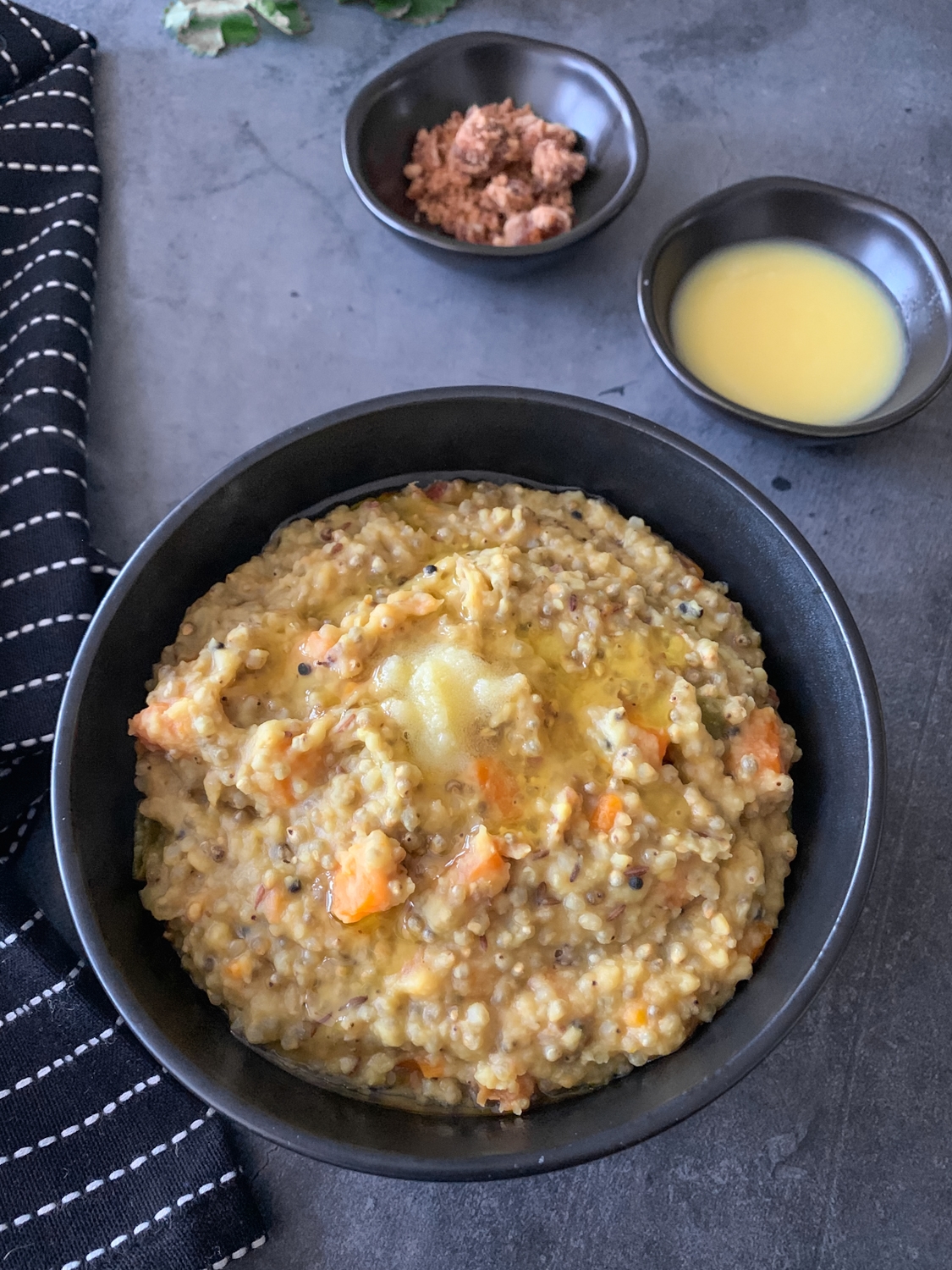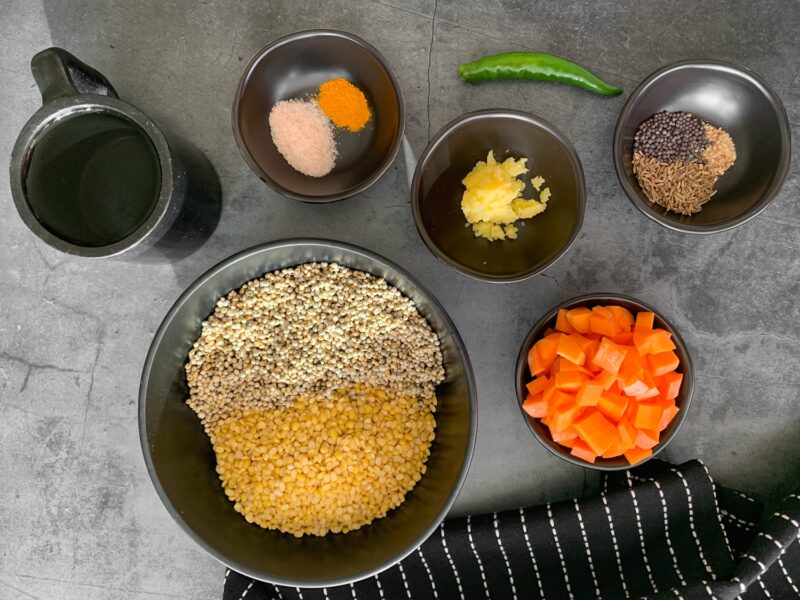
For the khichdi:
| Bajra, soaked overnight | 1 cup |
|---|---|
| Moong dal or split green gram | 1 cup |
| Water | 5 cups |
| Green chilli, whole | 1, or as per spice tolerance |
| Chopped vegetables of your choice | 1 cup |
| Salt | to taste |
For the tempering:
| Ghee | 3 teaspoons |
|---|---|
| Mustard seeds | 1/2 teaspoon |
| Cumin seeds | 1 teaspoon |
| Asafoetida | 1/4 teaspoon |
| Turmeric powder | 1/2 teaspoon |
For the garnish:
| Ghee | 1 teaspoon |
|---|---|
| Jaggery | 1 small piece |
What You Will Need
A bowl, a colander, a serving spoon, a pressure cooker, measuring spoons.

Instructions
Soak the bajra overnight. Drain the water the next morning, and wash the bajra well.
Put the washed bajra in a colander and let the water drain out.
Turn the stove on and place the pressure cooker on the stovetop. The flame should be medium-high.
Add ghee to the pressure cooker. Once the ghee is hot, temper the mustard seeds, cumin seeds, turmeric powder, and asafoetida.
Add the green chilli, chopped vegetables, bajra, moong dal and some salt to the pressure cooker and sauté for two to three minutes.
Add water, then close the lid of the pressure cooker. Cook for five whistles on medium-high heat.
Reduce the heat to low, and simmer for two minutes before switching off the flame.
Allow the steam to release naturally from the pressure cooker.
Serve the khichdi, piping hot, with ghee, and a piece of jaggery on the side.
Tips
- It is important to use soaked bajra since it takes a long time to cook.
- Dry-roasting the bajra before soaking it in water lends a beautiful aroma to the khichdi.
Urvashi Swami is a development professional with a passion for sustainable food. Following her master’s from Tata Institute of Social Sciences (TISS) in Mumbai, she worked in the agriculture and nutrition sectors. Urvashi wants to spread awareness about how climate-resilient and nutritious millets are, and help bridge the gap between millet producers, consumers, and suppliers.
You must be logged in to rate this recipe.

Sign in with email
